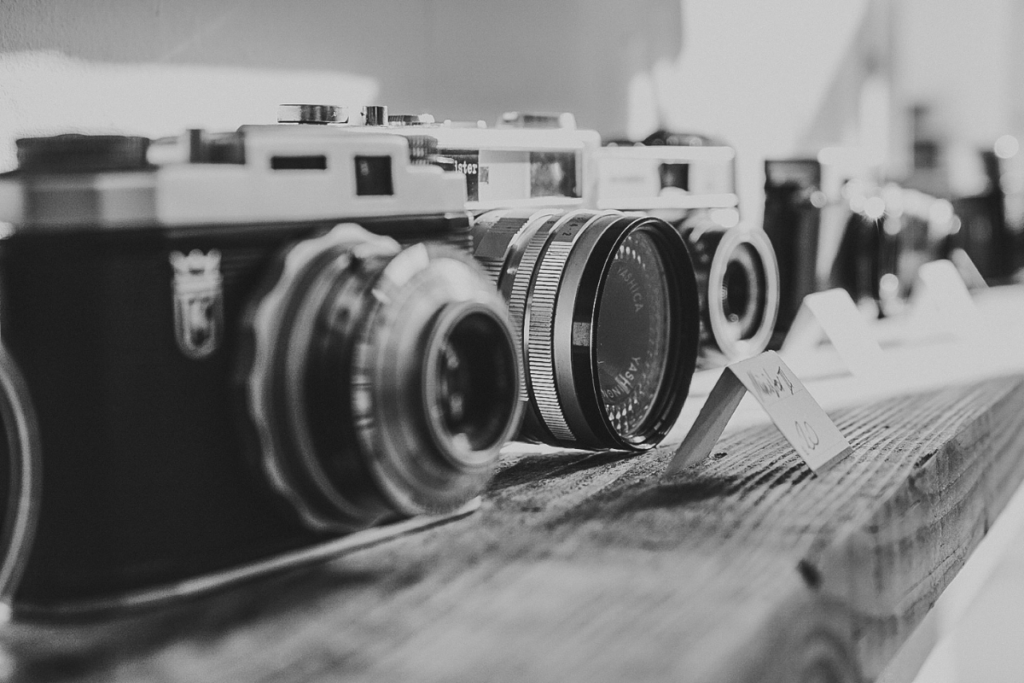
In general, mirrorless cameras can last well over a decade if properly maintained. Their longevity depends on factors such as overall usage, build quality, and component reliability.
The image sensor is the heart of any camera. This component often determines if a mirrorless camera continues to function at an acceptable level. However, other parts of the camera are also important. They help predict the camera’s overall lifespan. For example, the shutter mechanism.
Moreover, the brand and model of the camera can greatly influence its durability. Some manufacturers boast impressive shutter life ratings.
Which Mirrorless Camera Parts Are Replaceable and Irreplaceable?
As a mirrorless camera owner, you might wonder which parts of your camera are replaceable. You may also wonder about which ones are not. Knowing this information can help you maintain and care for your camera. It ensures it lasts for many years.
Replaceable parts in a mirrorless camera are components. They can be easily removed and replaced by the user or a professional service with little effort. Some of these include:
- Batteries: Batteries have a limited lifespan and will eventually need to be replaced. Make sure to buy a genuine battery from the camera manufacturer. You can also get one from a reputable third-party brand for the best performance.
- Lenses: One of the main advantages of mirrorless cameras is the ability to change lenses. You can expand your creativity by investing in different types of lenses. Over time, lenses can wear out, so it’s important to properly maintain and store them.
- Memory cards: Memory cards can wear out over time due to repeated read and write cycles. Always use high-quality cards from trusted brands. Replace them when they start showing signs of failure.
On the other hand, some irreplaceable parts cannot be easily swapped or fixed. When these critical components malfunction, they may need significant repairs. They may also need to replace the entire camera. Examples of irreplaceable parts include:
- Image sensor: The image sensor is the heart of your mirrorless camera. It captures the light entering through the lens and converts it into a digital image. Sensors are designed to last for many years. However, dust, moisture, or extreme temperatures can damage them. Keep your camera clean and protect it from harsh environments. This will prolong the sensor’s life.
- Image processor: The image processor processes raw data from the sensor. It then creates the final image file. It’s a vital component that typically lasts for the life of the camera. But, damage to the processor could need a costly repair or a new camera.
- Shutter mechanism: Mirrorless cameras don’t have a traditional mechanical shutter like DSLRs. But, they still use electronic shutters. Over time and with extensive use, the shutter mechanism might wear out or fail. This can be an expensive repair depending on the camera model and age.
Understanding which parts of your mirrorless camera are replaceable and irreplaceable lets you make informed decisions. This includes deciding about maintenance, repair, and when to consider an upgrade. Don’t forget to follow the manufacturer’s guidelines for care and handling. This will ensure your camera lasts as long as possible.
Factors Affecting the Lifespan of Mirrorless Cameras
In this section, we will discuss some key factors. These factors affect the lifespan of your mirrorless camera.
Environment and Exposure
The environment and exposure to elements such as dust, moisture, and humidity play a crucial role in the longevity of your camera. Using your camera in a humid climate or dusty environment can deteriorate the internal components faster, potentially shortening its lifespan. To improve the durability of your camera, it is essential to protect it from harmful environmental factors.
Usage Considerations
How long your mirrorless camera lasts also depends on your usage habits. Factors like shutter count, autofocus, flash, and 4K video capabilities can contribute to the camera’s wear and tear. For instance, a higher shutter count or frequent use of autofocus can cause the components to wear out faster. Being mindful of your usage patterns can help extend the lifetime of your camera.
Maintenance and Care
Proper maintenance and care are critical to increasing your camera’s lifespan. Regularly cleaning dust, moisture, and other debris from your camera can prevent wear and tear. Additionally, perform firmware updates as necessary. This can help optimize performance and prolong the life of your mirrorless camera.
Replacing Worn-Out Camera Parts
Replacement of worn-out or damaged components is crucial in maintaining your camera’s durability and lastingness. By promptly replacing parts such as the sensor, image processor, or other internal components as they wear out, you can extend the overall lifespan of your camera.
Comparing the lifespan of mirrorless and DSLR cameras
Consider various factors when thinking about the lifespan of both mirrorless and DSLR cameras. Generally, mirrorless cameras can last from 3 to 5 years, with some models lasting up to 10 years. On the other hand, DSLR cameras have a longer lifespan. With proper maintenance, they can easily last 5 to 10 years or more.
One key aspect that determines the longevity of a camera is the shutter life. Mirrorless cameras have shutter lives ranging from 100,000 to 400,000 actuations or uses. This is particularly true for professional models.
Mirrorless cameras can use both mechanical and electronic shutters. They might last longer than DSLR cameras, which only have mechanical shutters. Electronic shutters don’t contribute to camera wear and tear. This is an advantage for mirrorless systems.
How To Extend The Life Of A Mirrorless Camera
Taking good care of your mirrorless camera can help extend its lifespan. It can also keep it functioning at its best. Here are some key tips to maintain your camera properly:
1. Keep it clean: Dust and dirt can accumulate on the camera’s sensor and lens, affecting image quality. Regularly clean the camera’s body, lens, and sensor. Use appropriate cleaning tools or solutions.
2. Protect from moisture: Moisture can damage electronic components. Avoid exposing your camera to excessive moisture or heavy rain. Always have a waterproof camera bag or cover handy if you’re shooting in wet conditions.
3. Minimize humidity: Storing your camera in humid environments can lead to mold growth. It can also damage its internal components. Invest in a dry cabinet or airtight storage box with silica gel packets. It will keep your camera safe in humid climates.
4. Regular updates: Camera manufacturers often release firmware updates to fix minor issues. They also release updates to improve camera performance. Be sure to regularly check for these updates and install them when available.
5. Use proper storage: Avoid storing your camera in extreme temperatures or direct sunlight. This can cause damage to the camera’s components over time. Store your camera in a cool, dry place when not in use.
6. Handle with care: Always handle your mirrorless camera gently, avoiding drops and other impacts. Use a camera strap or wrist strap to help prevent accidental falls.
7. Proper battery care: Prolong the battery life by storing it separately from the camera when not in use. Avoid overcharging. Also, occasionally discharge the battery fully to ensure its optimal performance.
Follow these tips and properly maintain your mirrorless camera. You can extend its life. This will allow you to capture stunning images for many years to come.
Role of Brands and Models in Lifespan
When choosing a mirrorless camera, consider the role of brands and models. They determine the overall lifespan of the camera. Some of the major players in the mirrorless camera market are Sony, Panasonic, Nikon, and Canon. These brands are known for producing high-quality and durable products.
Different models of mirrorless cameras have varying lifespans. Generally, professional models have a longer shutter life. They range from 100,000 to 400,000 shutter actuations. But, consumer or entry-level models might have a shorter shutter life. Mirrorless cameras use electronic shutters, so they don’t contribute to actuations. They have the potential to last longer than mirrored cameras.
When choosing a camera, it’s essential to look into the brand’s reputation for durability and reliability. Some brands emphasize these qualities more than others. This can affect the camera’s lifespan. Also, consider the intended use of the camera. If you’re a professional who will rely on your camera for daily work, it’s wise to invest in a more durable model. It can withstand professional use.
Remember, investing in a reputable brand can make a significant difference in the lifespan of your mirrorless camera. Also, choosing a model suited to your needs can help.
Conclusion
Several factors contribute to the overall lifespan of your camera. They include the build quality, shutter life, and proper care and maintenance. Based on the gathered information, a well-maintained mirrorless camera can last at least 10 years without significant issues.
Frequently Asked Questions
Do Mirrorless Cameras Have a Shutter Life?
Yes, mirrorless cameras have a shutter life, which refers to the number of images you can capture before the shutter mechanism starts to wear out. Shutter life varies depending on the brand and model of your camera. On average, a mirrorless camera can have a shutter life ranging from 100,000 to 400,000 actuations.
How important is shutter count in mirrorless cameras?
Shutter count is an essential factor in assessing the overall lifespan of a mirrorless camera. A high shutter count indicates that the camera has been used extensively, and critical components may wear out sooner. When buying a used camera, checking the shutter count helps you understand the camera’s remaining lifespan and potentially negotiate a better price.
Are there any maintenance tips to prolong a mirrorless camera’s life?
To keep your mirrorless camera in optimal condition, follow these maintenance tips:
- Store your camera in a cool, dry place to avoid moisture and humidity.
- Clean the sensor and lens regularly, using a soft brush or an appropriate cleaning solution.
- Keep the camera body and lens mount free from dust and debris.
- Use a protective case when traveling to avoid damage to the camera.
- Update the camera’s firmware to ensure optimal performance.
Do professional mirrorless cameras last longer than consumer models?
In general, professional mirrorless cameras have a more robust build and higher-quality components, leading to a longer lifespan compared to consumer models. Although they can be more expensive initially, professional cameras may prove to be more cost-effective in the long run due to their enhanced durability.
Can the performance of mirrorless cameras deteriorate over time?
Yes, the performance of mirrorless cameras can deteriorate over time. Components such as the sensor, image processor, and autofocus system may gradually degrade due to frequent use. To maintain optimal performance, it’s essential to take proper care of your camera and promptly address any issues that arise.
What parts commonly wear out in mirrorless cameras?
Certain parts of a mirrorless camera are more susceptible to wear and tear, including:
- The shutter mechanism, which may wear out after an extensive number of actuations.
- The sensor, which can accumulate dust and debris, potentially causing image problems.
- The battery, which may lose its capacity to hold a charge over time.
- The lens mount, which can wear down due to frequent lens changes.
- Various buttons and dials, which may become less responsive with repeated use.
By following proper care and maintenance practices, you can minimize the wear on these components and extend the life of your mirrorless camera.

